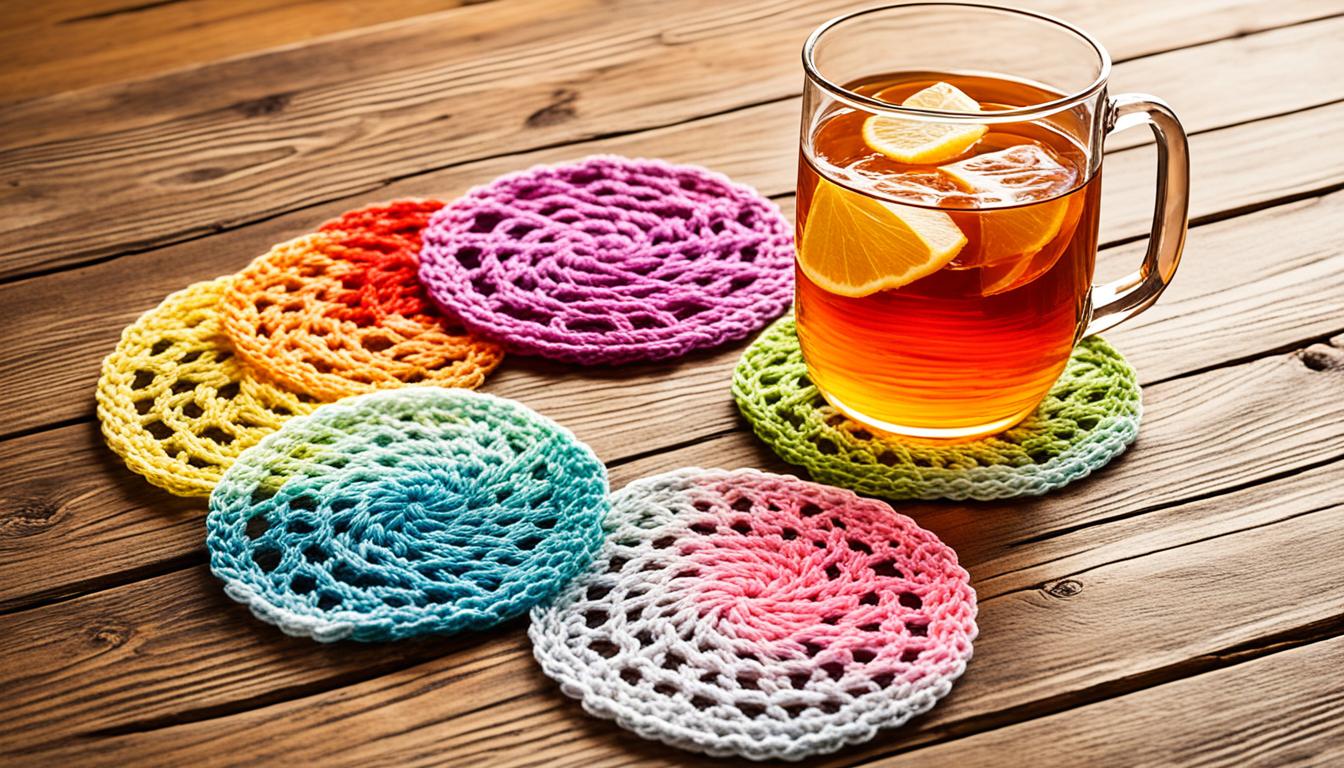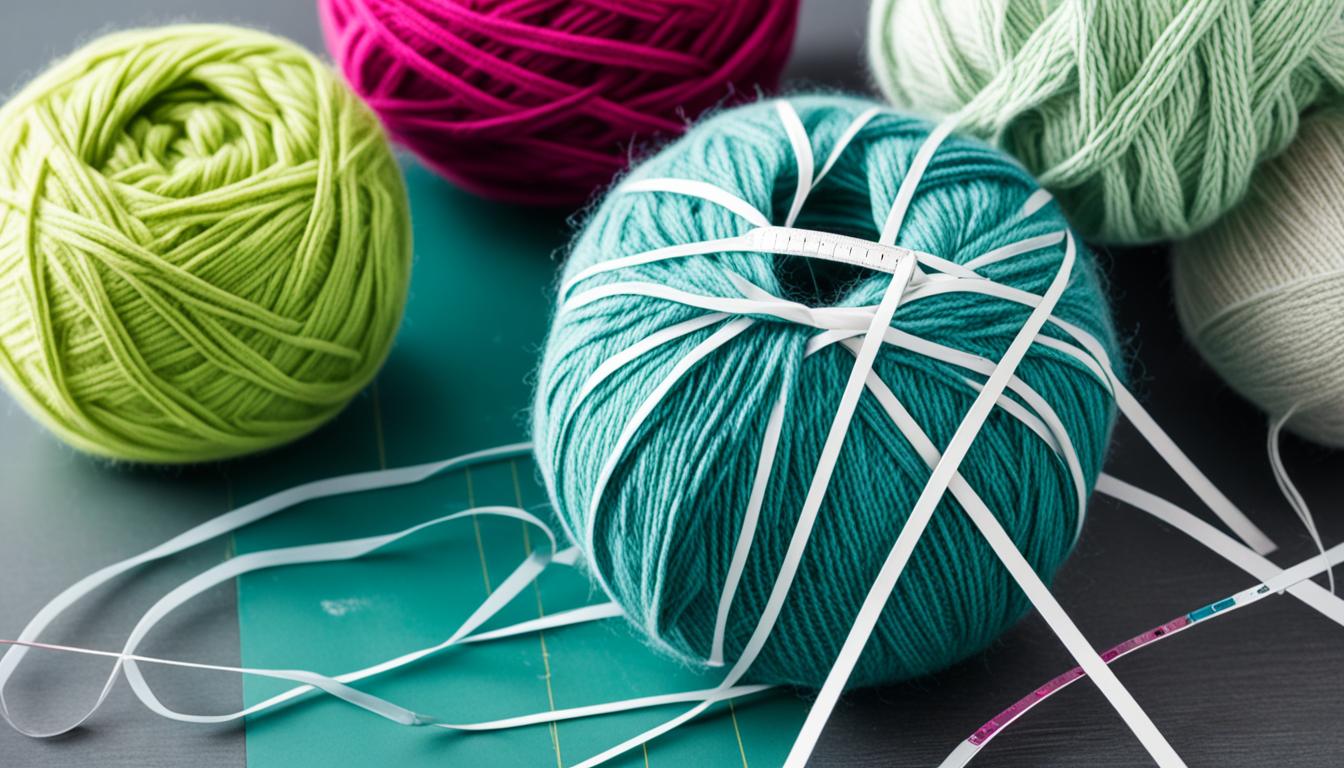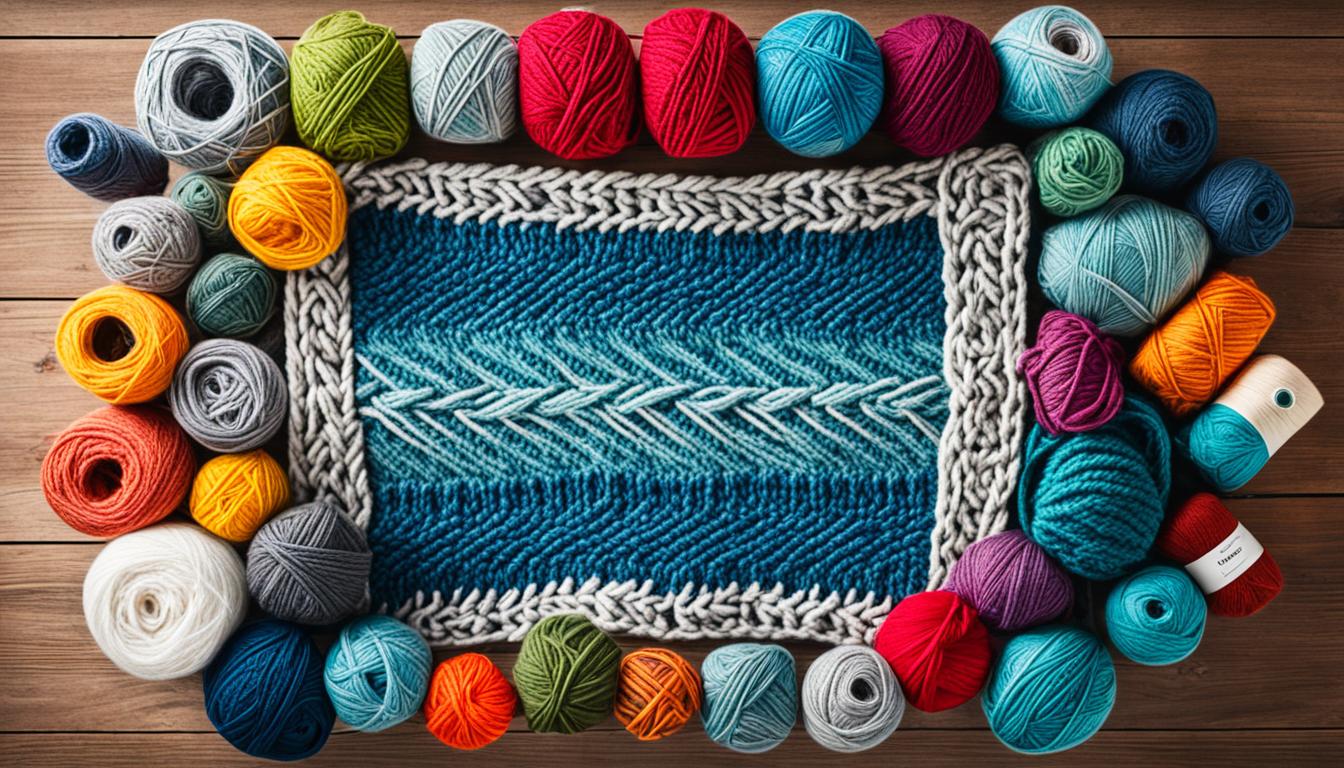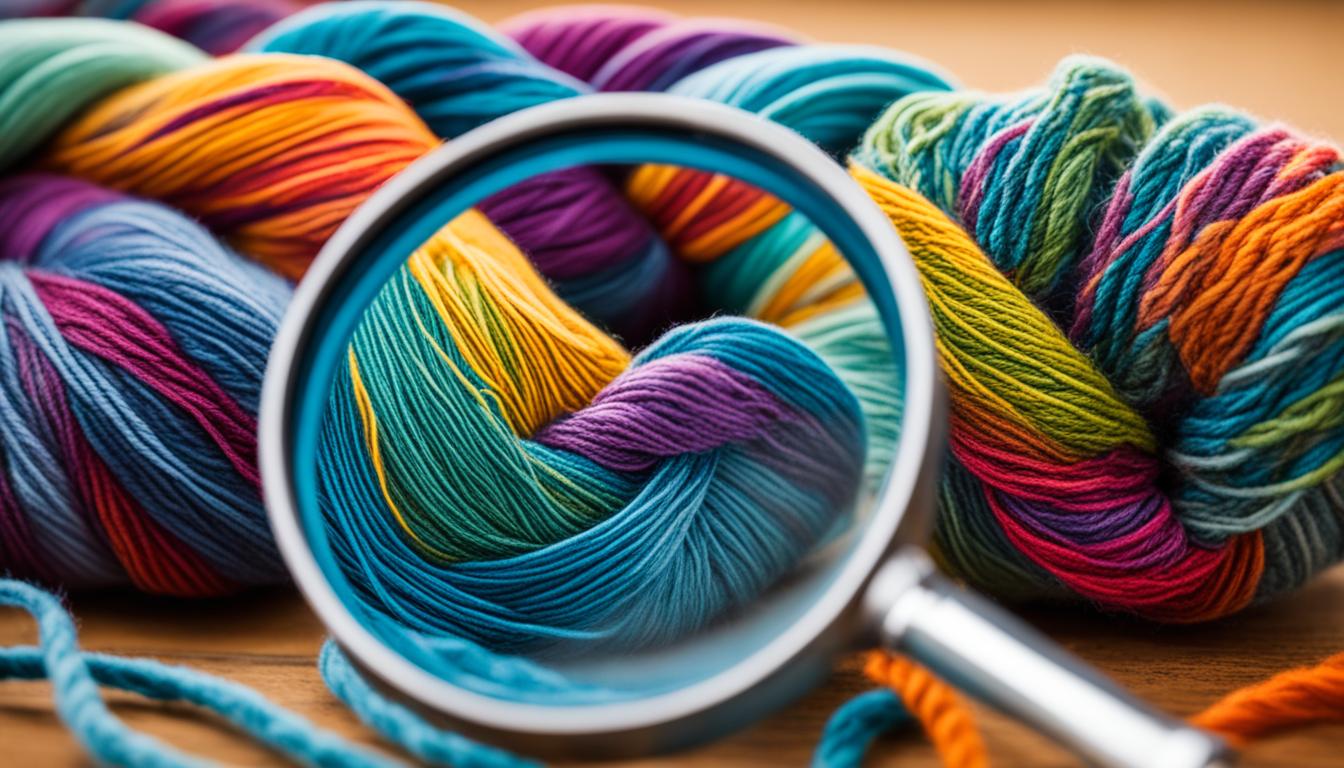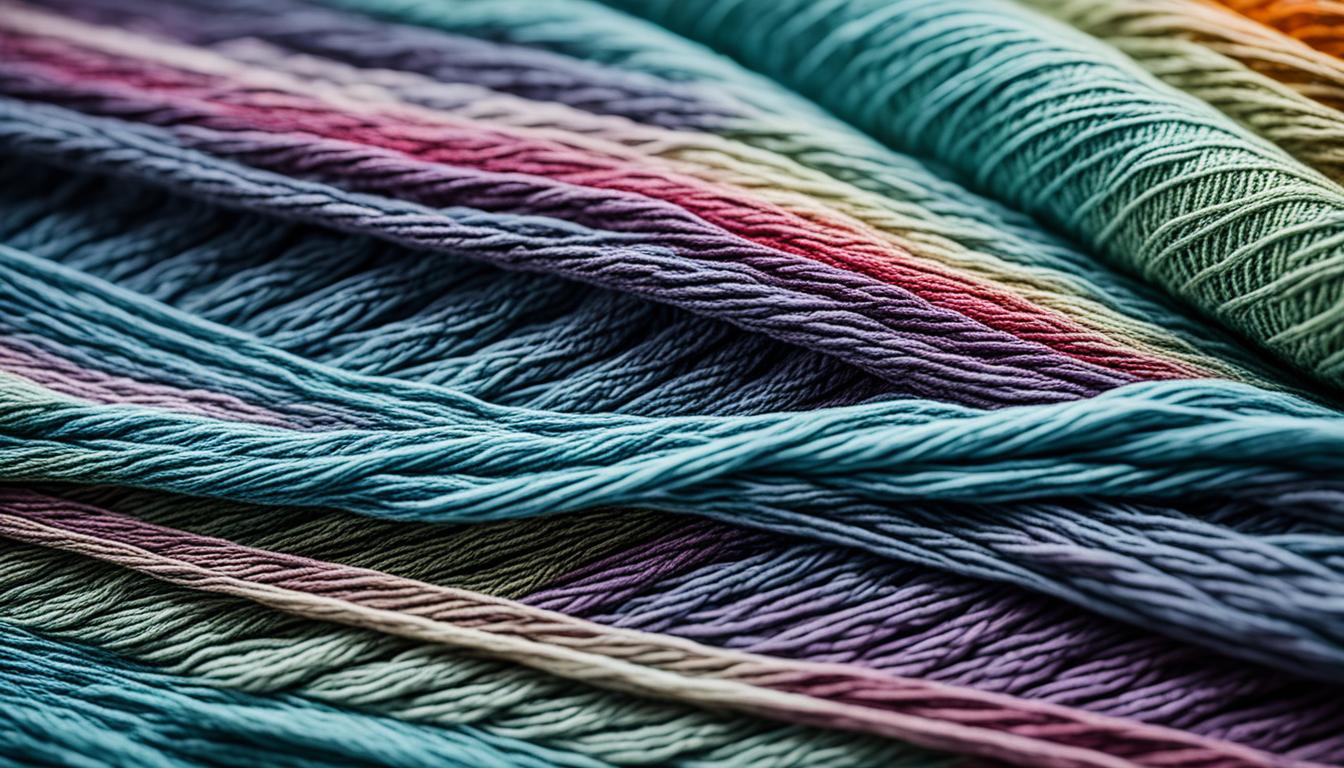When it comes to making coasters, the type of yarn you choose can have a significant impact. Acrylic yarn is commonly used in crafting projects, but can it also be suitable for creating practical and trendy coasters? This article delves into the subject, examining the advantages and disadvantages of using acrylic yarn for coasters. So, can acrylic yarn really work for making coasters? Let’s discover the answer!
Acrylic yarn offers a wide range of possibilities for DIY projects, including home decor items like coasters. Its affordable price, vibrant colors, and versatile nature make it appealing to many crafters. But is it the right choice for coasters? We’ll weigh its advantages and disadvantages and provide you with creative ideas to help you decide.
Key Takeaways:
- Acrylic yarn is a popular choice for DIY projects, including coasters.
- It offers vibrant colors and versatility, making it appealing to crafters.
- However, acrylic yarn has its pros and cons when it comes to coasters.
- Consider factors such as water absorbency and heat resistance when choosing yarn for coasters.
- We’ll explore both the advantages and disadvantages of using acrylic yarn for coasters.
What Do Coasters Do?
Coasters serve a variety of purposes and are essential accessories for any beverage lover. These humble yet functional items are designed to protect surfaces and enhance the drinking experience. Let’s explore the functionality and benefits of these small but mighty objects.
The Functionality of Coasters
Coasters are specifically designed to be placed under drinks, providing a barrier between the cup and the surface it rests on. Their primary goal is to prevent water rings and condensation from damaging furniture, countertops, or tablecloths. By absorbing or preventing moisture, coasters help maintain the integrity of surfaces over time.
In addition to moisture protection, coasters also shield surfaces from scratches, scuffs, and heat. When placed under hot or cold drinks, they act as insulating pads, preventing any potential damage caused by extreme temperatures. This functionality ensures the longevity of your favorite furniture pieces and delicate surfaces.
The Benefits of Coasters
Coasters offer numerous benefits beyond their protective functionality. Firstly, they add a decorative element to any room. With an array of designs, colors, and materials available, coasters can complement and enhance the overall aesthetic of your home decor. They provide an opportunity for self-expression and can be customized to match your personal style or the theme of your living space.
Furthermore, coasters contribute to the cleanliness and tidiness of your home. By placing drinks on coasters, you can prevent spills, drips, and stains, making clean-up a breeze. This not only saves you time and effort but also ensures your surroundings stay neat and presentable at all times.
The functionality and benefits of coasters make them a must-have item for any household or commercial establishment. Whether you’re sipping on a refreshing iced tea or enjoying a hot cup of coffee, using coasters for your drinks is a simple yet effective way to preserve your surfaces and elevate your overall drinking experience.
So, next time you reach for a coaster, remember its role in protecting your furniture, adding style to your space, and maintaining a clean and orderly environment. Happy coaster-protected sipping!
Pros and Cons of Cotton Yarn for Coasters
When it comes to crafting coasters, cotton yarn is a popular choice among enthusiasts. It offers several advantages that make it a reliable option for creating functional and stylish coasters. However, like any material, cotton yarn also has its drawbacks to consider. Let’s explore the advantages and disadvantages of using cotton yarn for coasters.
Advantages of Cotton Yarn
Cotton yarn is known for its absorbency, making it an excellent choice for coasters. When you place a drink on a cotton yarn coaster, it effectively prevents water from seeping through to the surface below. This absorbent quality helps protect your furniture from water rings and potential damage.
In addition to its absorbency, cotton yarn is also durable and can withstand frequent use. Coasters made from cotton yarn can handle the everyday wear and tear of glasses and mugs without losing their shape or effectiveness.
An advantage of cotton yarn is its heat resistance. Cotton fibers have a high melting point compared to synthetic materials. This means that cotton yarn coasters can safely protect your tables and countertops from hot beverages without the risk of melting or damage.
Disadvantages of Cotton Yarn
“Cotton has limited color choices and a matte appearance.”
One of the main disadvantages of cotton yarn is its limited color choices compared to synthetic alternatives like acrylic yarn. While cotton yarn does offer a variety of colors, it may not have the same extensive range as acrylic yarn. This can limit your creative options when it comes to designing coasters in vibrant or unique color schemes.
Furthermore, cotton yarn has a natural matte appearance. Although this can be desirable for some designs, it may not provide the same sheen or luster as other yarn materials, such as acrylic or wool.
Another consideration when using cotton yarn for coasters is that it can be a bit challenging to work with, especially for beginners. The texture of cotton yarn can sometimes make it difficult to achieve consistent tension while crocheting or knitting. However, with practice and proper techniques, you can overcome this challenge and create beautiful cotton yarn coasters.
Lastly, it’s important to note that cotton has a tendency to shrink when washed. Therefore, it’s crucial to follow the care instructions for your cotton yarn coasters to prevent shrinking and maintain their original shape and size.
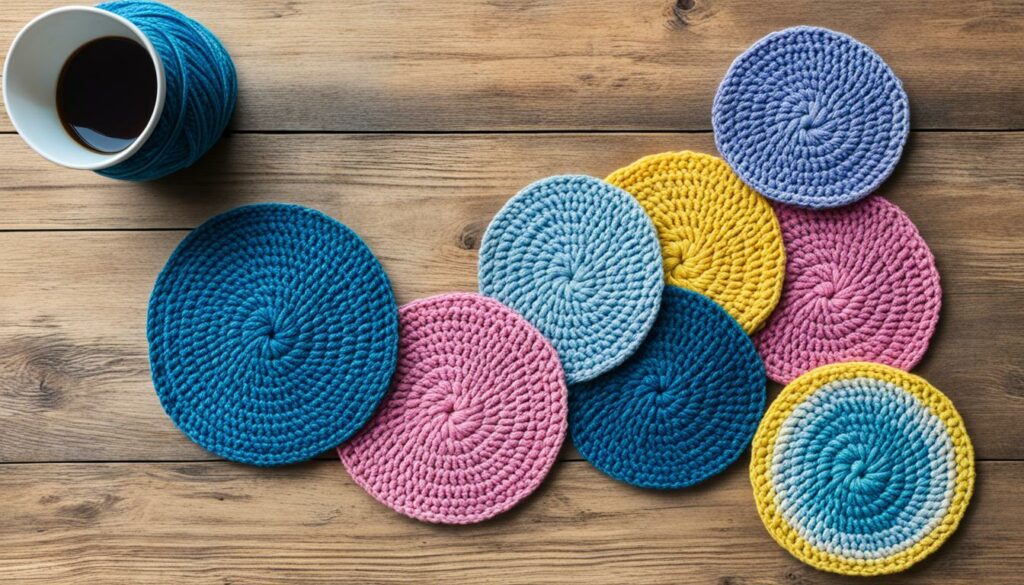
| Advantages of Cotton Yarn | Disadvantages of Cotton Yarn |
|---|---|
| High absorbency | Limited color choices |
| Durable | Matte appearance |
| Heat resistant | Challenging to work with |
| May shrink when washed |
Pros and Cons of Acrylic Yarn for Coasters
When considering the suitability of acrylic yarn for coasters, it’s important to evaluate its advantages and disadvantages. Acrylic yarn, a synthetic fiber, offers a wide array of color options and varieties, making it perfect for creating vibrant and eye-catching coasters. With its non-absorbent nature, acrylic yarn allows water to bead on the surface of the coaster, preventing damage to furniture and surfaces. This characteristic also ensures that the coasters dry quickly, reducing the risk of mildew or mold.
One of the significant advantages of acrylic yarn is its ease of use. It is a versatile and beginner-friendly option for crafting coasters, as it doesn’t require specialized care or knowledge. Acrylic yarn is readily available in craft stores and online platforms, making it easily accessible for various projects.
However, it is essential to be aware of the potential downsides of acrylic yarn for coasters. Some individuals with skin sensitivities may find acrylic yarn uncomfortable or irritating to the touch. Additionally, certain types of acrylic yarn may pill or fray with heavy use, compromising the longevity and appearance of the coasters.
Another important consideration is the sensitivity of acrylic yarn to heat. Unlike natural fibers like wool or cotton, acrylic yarn can melt when exposed to high temperatures, such as hot cups or mugs. Therefore, it is crucial to use caution when selecting acrylic yarn for coasters that may come into direct contact with hot objects.
Overall, acrylic yarn offers a range of advantages for creating coasters, including its vibrant colors, water-resistant properties, accessibility, and ease of use. However, it is important to consider individual preferences and project requirements when choosing yarn for coasters. By weighing the advantages and disadvantages of acrylic yarn, crafters can make informed decisions to achieve beautiful and practical results.
| Advantages | Disadvantages |
|---|---|
| ✓ Wide range of color options and varieties | ✗ Potential discomfort for individuals with skin sensitivities |
| ✓ Non-absorbent, allows water to bead on the surface | ✗ Certain types may pill or fray with heavy use |
| ✓ Easy to work with, suitable for beginners | ✗ Sensitivity to heat, may melt with exposure to high temperatures |
| ✓ Readily available in craft stores and online platforms |
Pros and Cons of Wool Yarn for Coasters
When it comes to crafting coasters, wool yarn is an option that offers unique advantages and disadvantages. As a natural fiber, wool provides excellent heat resistance and insulation, making it ideal for keeping tabletops safe from hot beverages. Additionally, wool yarn can be felted to create intricate and distinctive designs, adding a touch of elegance to your coasters.
However, it’s important to consider the potential downsides of using wool yarn for coasters. Wool requires special care when cleaning, as it can shrink or felt if not properly washed. This means your wool yarn coasters may require extra attention and care to maintain their shape and quality.
While wool yarn can be a cozy and stylish choice for coasters, it is not as commonly used as cotton or acrylic. Cotton yarn offers a wide range of color options and is highly absorbent, while acrylic yarn provides durability and an array of vibrant colors. When deciding whether to use wool yarn for coasters, consider your specific needs and preferences to find the perfect yarn for your project.
Pros and Cons of Wool Yarn for Coasters
| Advantages of Wool Yarn | Disadvantages of Wool Yarn |
|---|---|
| Excellent heat resistance | Requires special care when cleaning |
| Provides insulation | Potential for shrinkage or felting if not washed properly |
| Can be felted to create unique designs | Not as commonly used for coasters |
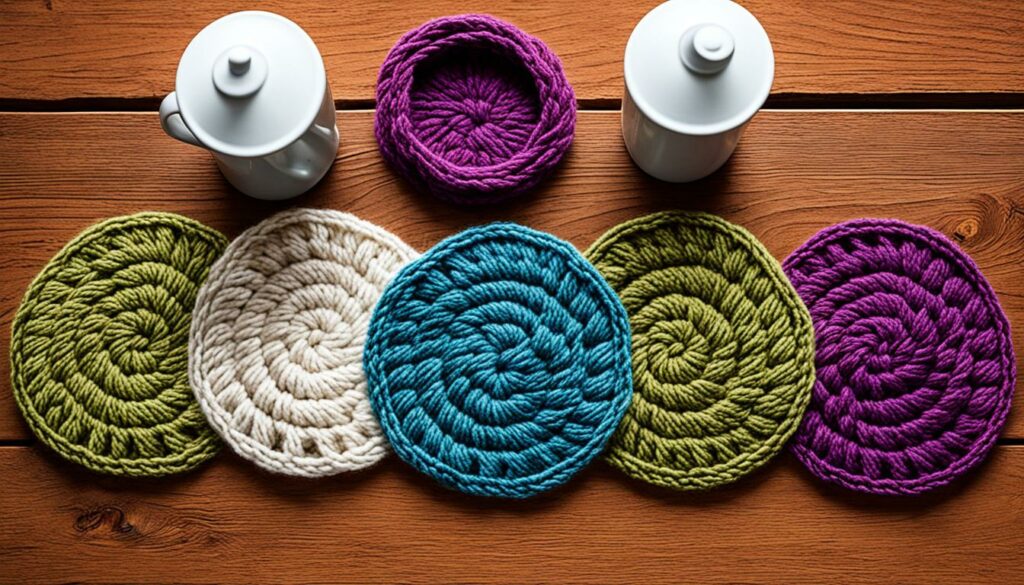
Despite its drawbacks, wool yarn can be a wonderful choice for creating coasters that are both functional and aesthetically pleasing. If you’re looking to add a touch of warmth and sophistication to your home decor, consider experimenting with wool yarn coasters and enjoy the cozy ambiance they bring to your space.
Factors to Consider When Choosing Yarn for Coasters
When it comes to selecting the perfect yarn for your coasters, there are several factors that you should take into consideration. The choice of yarn material, weight, color and pattern, as well as washability, all play a significant role in determining the suitability of the yarn for coaster projects.
Yarn Material
The material of the yarn is an important consideration as it affects the durability, heat resistance, and absorbency of the coasters. Here are three common yarn materials used for coasters:
| Yarn Material | Pros | Cons |
|---|---|---|
| Cotton | High absorbency, durability, and heat resistance | Limited color options, matte appearance, can shrink when washed |
| Acrylic | Wide range of color options, easy to work with, lightweight | Possible skin sensitivity, prone to pilling and fraying, sensitive to heat |
| Wool | Excellent heat resistance, insulation, and softness | Requires special cleaning care, can shrink or felt if not washed properly, less commonly used |
Yarn Weight
The weight of the yarn is another important factor to consider. For coasters, medium/worsted weight yarn is often preferred as it strikes a balance between thickness and daintiness. This weight allows the coaster to have enough substance for daily use while still maintaining an elegant appearance.
Color and Pattern
The color and pattern of the yarn play a crucial role in the aesthetic appeal of the coasters. You can choose from a wide range of colors to complement your home decor or add a pop of color to your table setting. Similarly, patterns such as stripes, geometrics, or intricate designs can enhance the visual interest of your coasters.
Washability
Lastly, considering the washability of the yarn is essential for the practicality and maintenance of your coasters. You’ll want to choose yarn that can withstand regular washing without losing its color or shape, ensuring that your coasters remain fresh and clean with minimal effort.
By carefully considering these factors – yarn material, weight, color and pattern, and washability – you can select the perfect yarn for your coaster projects that not only looks beautiful but also performs well in everyday use.
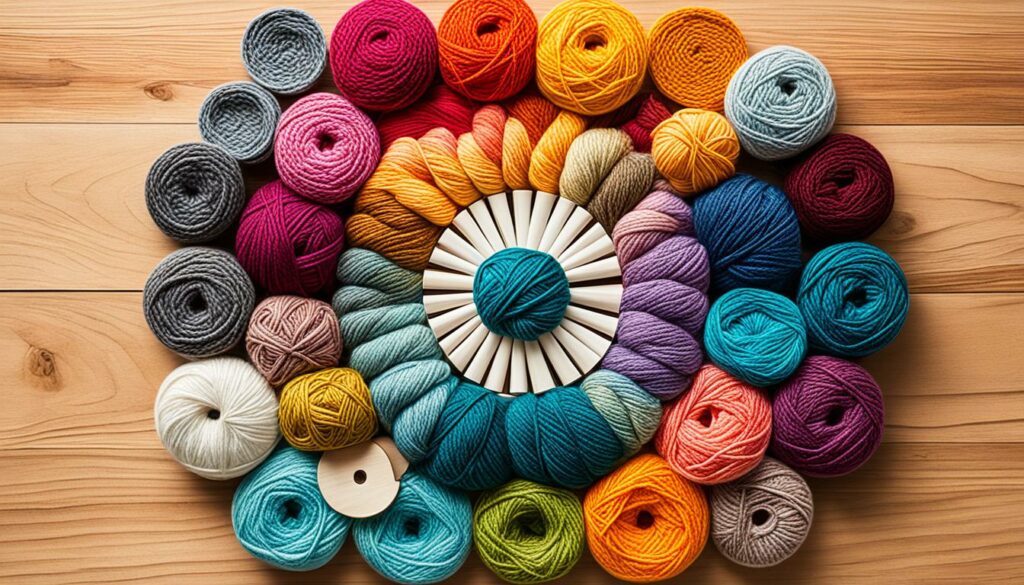
Crocheting Coasters: Tips and Advice for Beginners
If you’re new to crocheting, making coasters is a fantastic way to start your crochet journey. Coasters are quick and practical projects that allow you to practice essential crochet techniques while creating useful items for your home.
When it comes to crocheting coasters, there are a few key techniques you’ll want to familiarize yourself with. These techniques will form the foundation for your coaster-making skills:
- Working in the round: Coasters are typically crocheted in rounds, starting with a center and gradually increasing the stitch count to create a circular shape.
- Single crochet: This basic stitch is versatile and commonly used in coaster patterns. It creates a tightly woven fabric that is perfect for protecting surfaces from hot or cold beverages.
- Half double crochet: Another essential stitch for coaster-making, the half double crochet stitch is slightly taller than the single crochet. This stitch adds a bit of height and texture to your coasters.
- Double crochet: The double crochet stitch creates a taller stitch, adding even more height and texture to your coasters. It’s a great stitch to experiment with for different design possibilities.
- Slip stitch: Often used for joining rounds and creating clean edges, slip stitches are handy for finishing off your coaster projects.
Now that you have the basic crochet techniques down, it’s time to explore some beginner-friendly coaster patterns. These patterns are perfect for honing your skills and creating simple and stylish coasters:
- Simple circle coasters: Start with the basics by crocheting a classic circular coaster. You can experiment with different stitch patterns or color combinations to add your personal touch.
- Simple square coasters: If you prefer a more geometric shape, try your hand at crocheting square coasters. They’re great for showcasing color blocking or different stitch textures.
- Color block coasters: Get creative with color! Choose a simple stitch pattern and alternate between different colors to create visually striking coasters.
- Spiral coasters: Take your coaster designs to the next level with spiral patterns. These coasters are made by continuously working in a spiral without joining rounds, resulting in a unique and eye-catching design.
Remember, practice makes perfect! Don’t be afraid to experiment with different yarns, stitch patterns, and designs as you gain confidence in your crochet skills. Coasters are an excellent canvas for exploring your creativity and producing practical and beautiful crochet projects.
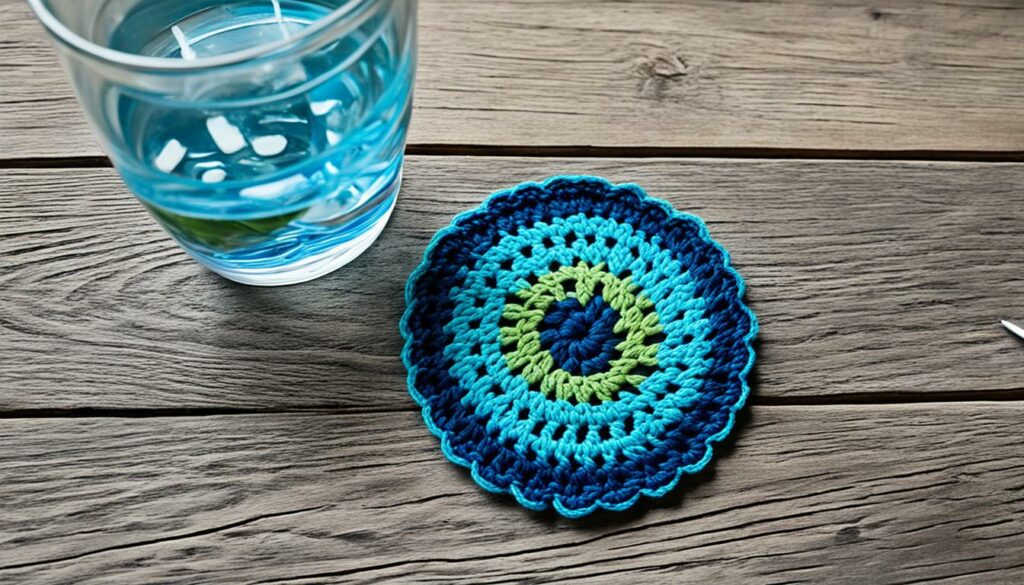
Creative Ideas for Crochet Coaster Projects
When it comes to crochet coaster projects, the possibilities are endless, especially when using acrylic yarn. Let’s explore some creative ideas to make your coasters truly unique and eye-catching!
1. Acrylic Yarn Coaster Ideas
- Scrap Yarn Coasters: Don’t let those leftover yarn scraps go to waste! Combine different colors and textures to create one-of-a-kind coasters that showcase your creativity.
- Colorwork Coaster Designs: Experiment with colorwork techniques such as stripes, tapestry crochet, or intarsia crochet to add vibrant patterns and visual interest to your coasters.
- Themed Coaster Collections: Customize your coaster collection to match different occasions or interests. Whether it’s a set of coasters inspired by nature, holidays, or your favorite movies, themed coasters make great gifts or personal touches to your home decor.
These acrylic yarn coaster ideas not only provide practical solutions but also allow you to unleash your creativity and make a statement with your crochet projects.
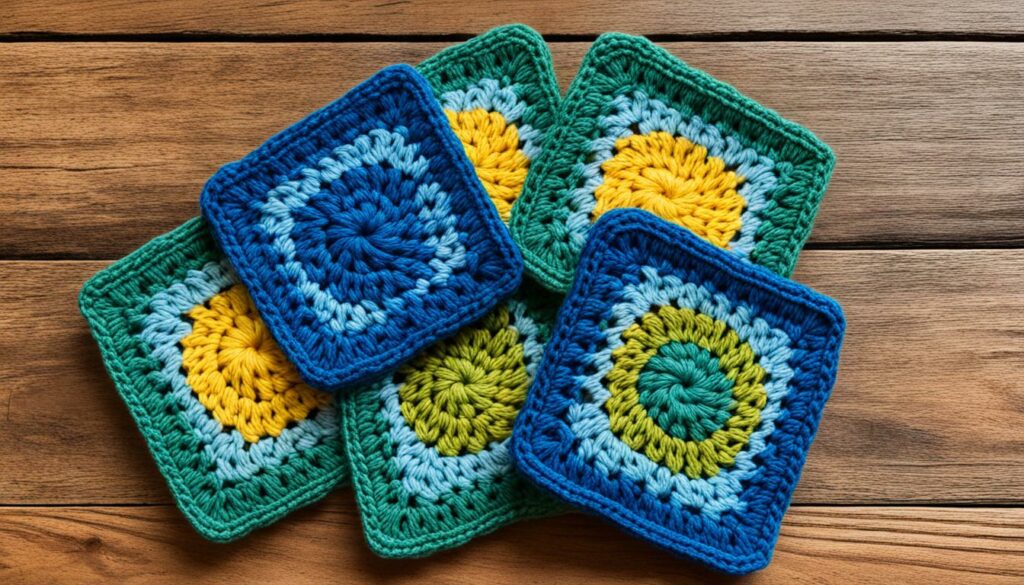
As you can see in the image above, the vibrant colors and intricate designs created with acrylic yarn can truly elevate the look of your coasters.
“Scrap yarn coasters are a fantastic way to use up those odds and ends, and they’re always a conversation starter when guests notice the unique patterns. Plus, with colorwork designs, you can bring a pop of personality to any beverage.” – Sarah, Crochet Enthusiast
Feel free to experiment with different combinations of acrylic yarn colors, stitch patterns, and even embellishments like buttons or beads. The sky’s the limit when it comes to creating crochet coasters that reflect your personal style!
| Acrylic Yarn Coaster Ideas | Description |
|---|---|
| Scrap Yarn Coasters | Utilize leftover yarn scraps to create unique and eye-catching coasters. |
| Colorwork Coaster Designs | Add vibrancy and texture to your coasters by incorporating colorwork techniques like stripes, tapestry crochet, or intarsia crochet. |
| Themed Coaster Collections | Create customized coaster collections for different occasions or interests, making them perfect for gifting or adding a personal touch to your home decor. |
Crocheting Coasters with Acrylic Yarn: Conclusion
In conclusion, acrylic yarn is a viable option for crafting coasters, but it’s important to consider its pros and cons. While acrylic yarn may not be absorbent like cotton or wool, it offers a wide range of vibrant colors and versatile varieties. Its lightweight nature and easy care make it a suitable choice for coaster projects.
However, it’s worth noting that acrylic yarn may not provide the same level of insulation as natural fibers like cotton or wool. Additionally, acrylic yarn is sensitive to heat and can melt when exposed to high temperatures.
Ultimately, the decision to use acrylic yarn for coaster projects depends on personal preference and the desired functionality of the coasters. If you prioritize a wide range of color options and easy maintenance, acrylic yarn may be the ideal choice for you.
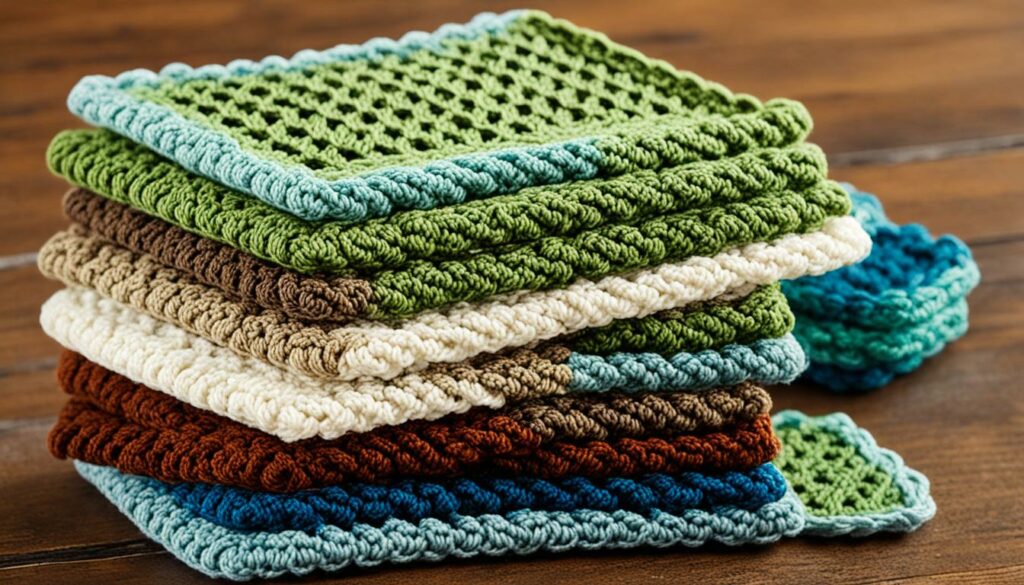
Explore More Yarn Options and Get Inspired
If you’re looking for yarn inspiration and crafting ideas, you’ve come to the right place! There are countless possibilities when it comes to yarn projects, and exploring different yarn options and resources can help fuel your creativity.
One great way to find inspiration is by visiting websites dedicated to yarn crafting. These platforms often feature a wide range of patterns, tutorials, and project ideas that can spark your imagination. They showcase the work of talented crafters from around the world and provide step-by-step instructions to help you bring your ideas to life.
Social media platforms are also excellent sources of inspiration. You can follow hashtags related to yarn crafting on platforms like Instagram and Pinterest to discover a wealth of creative ideas. Many crafters share their projects, tips, and insights, showcasing the versatility of different yarn types and techniques.
Online communities dedicated to yarn crafting are another valuable resource. These communities bring together like-minded individuals who share a passion for yarn projects. You can participate in discussions, ask for advice, and exchange ideas with fellow crafters. It’s a fantastic way to connect with others and learn from their experiences.
By staying connected to these yarn resources, you can constantly discover new patterns, techniques, and trends in the world of yarn. Whether you’re looking for crochet projects, knitting ideas, or other yarn-related crafts, the possibilities are endless. So, dive into the world of yarn and let your imagination run wild!
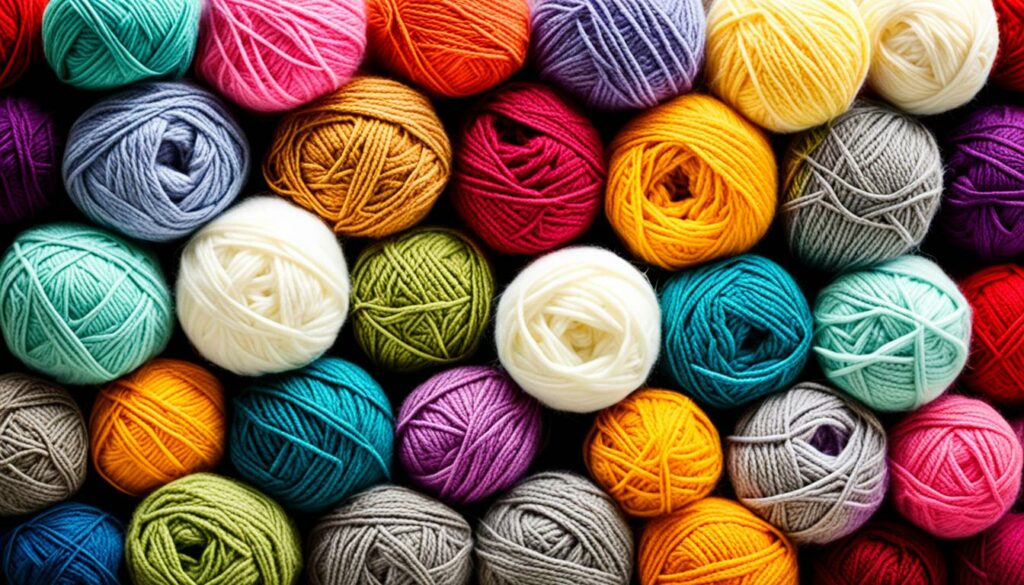
Inspiration at Your Fingertips
Here are some popular yarn crafting ideas to get you started:
- Create a cozy blanket using colorful yarn gradients.
- Crochet an adorable amigurumi toy for a unique gift.
- Knit a stylish scarf or hat to stay warm during the winter months.
- Design your own custom tapestry using various yarn textures.
- Make decorative pompoms to add a playful touch to your home decor.
- Experiment with different stitch patterns to create a one-of-a-kind sweater or cardigan.
- Try your hand at macrame and weave intricate wall hangings.
- Design a whimsical dreamcatcher using colorful yarn and beads.
Remember, the only limit is your imagination! So grab your yarn, needles, or hooks, and let your creativity soar. Happy crafting!
Conclusion
Choosing the right yarn for your coasters is crucial in creating functional and visually appealing items. The decision between acrylic, cotton, or wool yarns depends on your individual preferences and specific project requirements. When selecting yarn, important factors to consider include absorbency, durability, heat resistance, and ease of use.
Crocheting coasters with acrylic yarn offers a wide range of color options and versatility, allowing you to explore your creativity. However, it’s important to note that acrylic yarn may not provide the same level of absorbency or insulation as natural fibers like cotton or wool.
In the end, the choice of yarn is a personal one. Experimenting with different yarns can lead to exciting and unique coaster designs. So, don’t be afraid to try new materials and unleash your imagination to create coasters that reflect your style and meet your needs.
